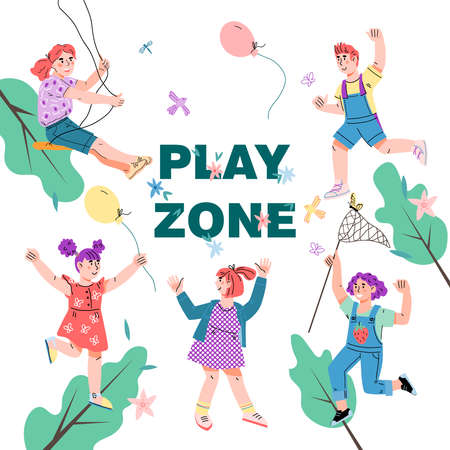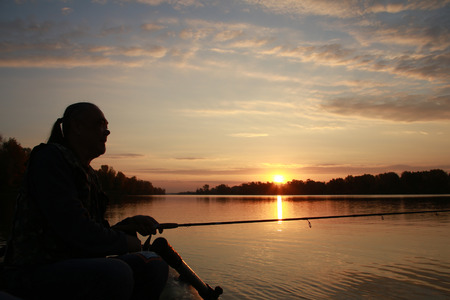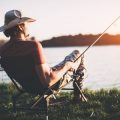1. Choosing the Right Fishing Spot
Picking the perfect fishing spot is one of the most important steps when planning a kid-safe and fun-filled day on the water—especially for beginners. You’ll want a place that’s safe, easy to access, and comfortable for kids and adults alike. Here are a few key things to keep in mind:
Look for These Features in a Family-Friendly Fishing Spot:
| Feature | Why It Matters |
|---|---|
| Calm Waters | Still or slow-moving waters like ponds or small lakes are safer and easier for kids to fish in. |
| Easy Access | A location with nearby parking, flat walking paths, and open shorelines makes it easier for families to set up and move around. |
| Restroom Facilities | Kid-friendly trips mean frequent bathroom breaks—make sure facilities are close by. |
| Picnic Areas & Shade | A shaded spot with picnic tables gives everyone a place to rest, snack, and cool down. |
Top Beginner-Friendly Spots to Consider:
- Local Parks with Stocked Ponds: Many community parks offer stocked fishing ponds that are perfect for young anglers just learning the ropes.
- Fishing Piers: These provide stable platforms over calm waters, often with railings for safety.
- State-Managed Fishing Lakes: These areas are usually well-maintained, clearly marked, and often have beginner zones or special family sections.
No matter where you go, always check local regulations before your trip. Some places require fishing licenses (even for kids), while others may have free fishing days or designated youth fishing areas. Planning ahead helps make the day smooth, safe, and full of fun memories!
2. Getting the Right Gear for Kids
Choosing the right gear is one of the most important steps to making your child’s first fishing trip safe, fun, and frustration-free. Kids need equipment that matches their size, skill level, and attention span. The goal is to keep things simple and enjoyable.
Kid-Friendly Fishing Rods
Start with a lightweight, short fishing rod—typically 3 to 5 feet long. These are easier for kids to handle and cast. Look for rods labeled as “youth” or “kid-sized.” They’re designed with smaller grips and lighter materials that make them more comfortable for small hands.
Beginner Reels: Spincast Is Best
Spincast reels are perfect for beginners. They have a push-button design that makes casting super easy. This type of reel also reduces tangles, which means less time fixing knots and more time catching fish.
Comparison of Reel Types
| Reel Type | Ease of Use | Best For |
|---|---|---|
| Spincast | Very Easy | Young kids and beginners |
| Spinning | Moderate | Older kids with some experience |
| Baitcasting | Difficult | Advanced anglers |
Tackle That Keeps It Simple and Safe
Use barbless hooks—theyre safer for kids and easier to remove from both fish and fingers. Stick with basic tackle like bobbers, split shot weights, and pre-tied hooks. For bait, worms or corn work great because they’re easy to use and attract a wide range of fish.
Recommended Basic Tackle List for Kids:
- Barbless hooks (size 6–10)
- Small round bobbers
- Split shot sinkers
- Nontoxic bait (worms, corn, or artificial bait)
- Tackle box with compartments to keep items organized
Dont Forget Safety Equipment
A life jacket is a must if you’re fishing near deep water or from a dock or boat. Make sure it fits snugly according to your child’s weight range. Sunglasses can protect little eyes from sun glare and flying hooks, while sunscreen keeps their skin safe during those sunny hours by the water.
Quick Safety Gear Checklist:
- Properly fitted U.S. Coast Guard-approved life jacket
- Sunglasses with UV protection
- Sunscreen SPF 30 or higher (water-resistant)
- Bug spray if youre in wooded or grassy areas
- A small first aid kit for minor cuts or scrapes
Selecting the right gear doesn’t have to be complicated—just focus on safety, simplicity, and comfort to help your child build confidence and have a blast on their fishing adventure.

3. Packing Smart for a Full Day Out
When youre heading out for a full day of fishing with kids, packing the right gear and supplies can make all the difference between a smooth, fun experience and a stressful one. Kids need more than just fishing rods and bait—they need comfort, entertainment, and plenty of snacks to keep their energy up.
Must-Have Essentials
Here’s a quick checklist of what to bring along:
| Item | Why Its Important |
|---|---|
| Snacks & Drinks | Keep kids fueled and hydrated throughout the day. Think granola bars, fruit snacks, bottled water, and juice boxes. |
| Sunscreen | Essential for protecting young skin from harmful UV rays, even on cloudy days. |
| Bug Spray | Mosquitoes and other bugs can ruin the fun—keep them away with a kid-safe repellent. |
| Extra Clothes | Kiddos are bound to get wet or dirty. Pack an extra set of clothes, including socks and shoes if possible. |
| First-Aid Kit | Be prepared for minor cuts or scrapes with band-aids, antiseptic wipes, and any medications your child might need. |
| Entertainment | There will be downtime. Bring small games, books, or fishing-themed coloring pages to keep them occupied while waiting for bites. |
Pro Tip: Organize by Category
Use separate ziplock bags or small containers to group items by type—snacks in one bag, first-aid supplies in another—to stay organized and find things quickly when needed.
Kid-Friendly Entertainment Ideas
- Waterproof playing cards
- Fishing-themed coloring books with crayons
- Puzzle books or sticker activities
- A simple scavenger hunt list (e.g., find a feather, spot a frog)
Keep It Light & Easy to Carry
If you’re walking to your fishing spot, pack everything into a backpack or rolling cooler. The goal is to be prepared without being overloaded. A comfortable trip means happy kids—and happy parents too!
4. Teaching the Basics of Fishing
Now that youre out by the water and ready to go, its time to teach your kids the basics of fishing in a fun and easy way! Keep things light-hearted and be patient—this is all about having a good time and making memories.
Simple Casting Techniques
Start with the easiest way to cast: the sidearm or overhead cast using a spin-cast rod. These rods have a push-button reel, which is perfect for little hands. Heres a step-by-step guide:
| Step | What to Do |
|---|---|
| 1 | Hold the rod with both hands and point it behind you. |
| 2 | Press and hold the button on the reel. |
| 3 | Swing the rod forward smoothly like youre tossing a ball. |
| 4 | Let go of the button when the rod is pointing where you want to cast. |
Practice makes perfect! Encourage your kids even if their casts don’t go far or straight—it’s all part of learning.
Baiting the Hook
This part might seem a little “icky” to some kids, but it can also be really exciting. If youre using live bait like worms, show them how to gently thread a piece onto the hook so it stays on. For artificial bait, like soft plastic worms or power bait, help them push it securely onto the hooks bend.
Kid-Friendly Bait Options:
- Live Worms: Classic and super effective for beginners.
- Corn Kernels: Easy to handle and great for panfish.
- Dough Balls: Fun to make at home and less messy than live bait.
Reeling in a Catch
The moment they feel a tug on the line—get ready for big smiles! Teach them to turn the handle of the reel slowly and steadily while keeping the rod tip up. Let them know it’s okay if they lose a fish; its all part of learning. Celebrate every nibble, bite, or catch with lots of encouragement!
Helpful Tips for First-Time Anglers:
- Praise effort over results—every try counts!
- Keep sessions short if attention spans are short (30–60 minutes is plenty).
- Use barbless hooks or crimp down barbs for easier catch-and-release.
- Bring wipes or towels—baiting hooks can get messy!
The key is to make each new skill feel like an exciting adventure. Stay upbeat, laugh through any tangles or missed casts, and enjoy watching your child fall in love with fishing one step at a time.
5. Keeping it Safe and Fun for Everyone
When youre planning a fishing trip with kids, safety always comes first — but that doesnt mean you cant make it exciting too! The key is to find the perfect balance between staying safe and keeping everyone engaged throughout the day.
Set Kid-Friendly Safety Rules
Before anyone casts a line, gather the group for a quick safety chat. Use simple language and explain the rules in a way kids can understand. Heres a table of basic safety guidelines every beginner-friendly fishing day should include:
| Rule | Why It Matters |
|---|---|
| Keep a safe distance when casting | Prevents hooks from accidentally hitting someone nearby |
| Wear life jackets near any water | Keeps kids safe in case they fall into the water unexpectedly |
| No running near the water or on docks | Avoids slips and falls that could lead to injuries |
| Always fish with an adult nearby | Makes sure help is available if anything goes wrong |
| Use sunscreen and drink water often | Keeps kids protected from sunburn and dehydration |
Add Some Fun With Challenges and Games
A great way to keep the energy high is by turning parts of the day into mini-games or fun challenges. This helps avoid boredom and gives kids something to look forward to besides just catching fish.
Ideas for Fishing Day Activities:
- Casting Contest: See who can cast the farthest (safely!) or land closest to a target.
- Bait Bingo: Make cards with different baits or lures—kids mark them off as they try each one.
- Catch of the Day Award: Give out small prizes for funniest fish face, smallest catch, or best teamwork.
- Nature Hunt: Create a checklist of things to find like feathers, shells, or specific birds.
The goal is to create lasting memories while teaching kids how to enjoy fishing responsibly. When children feel safe and entertained, they’re more likely to fall in love with the sport—and want to come back again and again!


